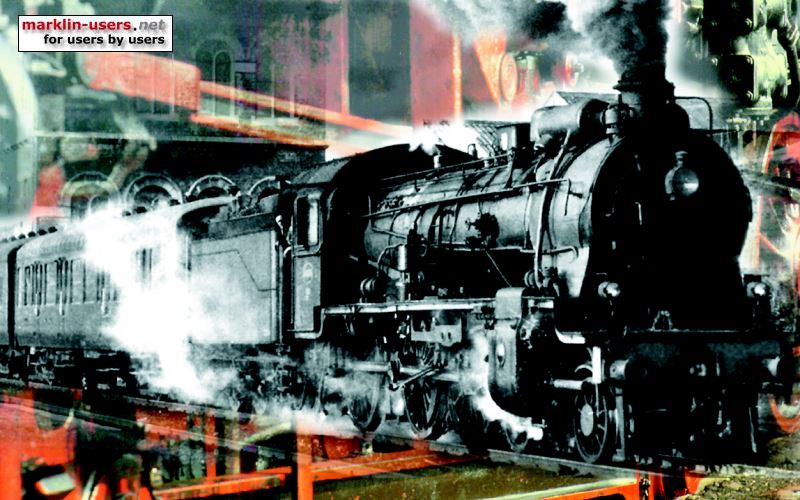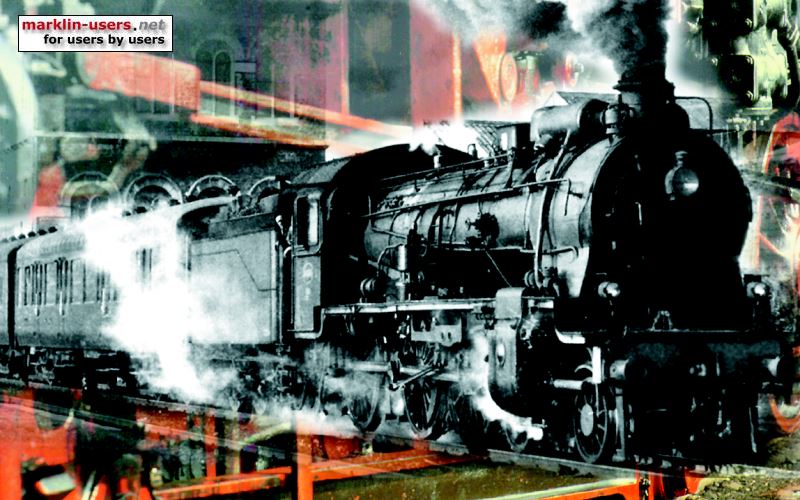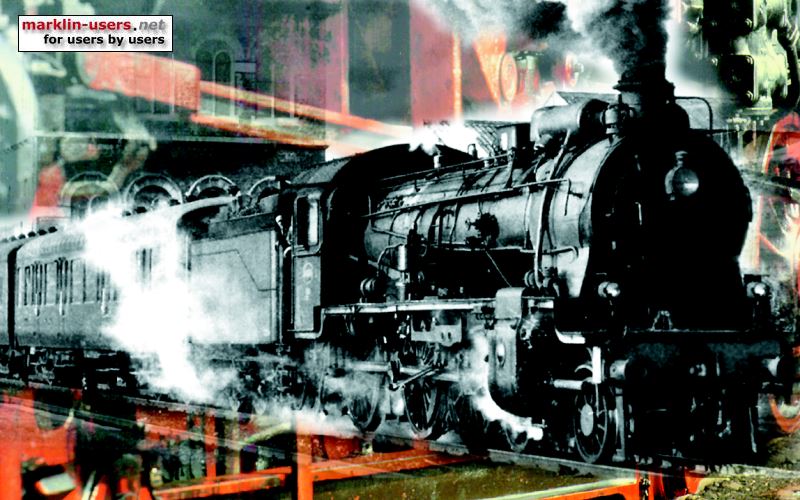
The locomotive has a Small Flat Collector Motor and an electro-mechanical reversing unit. I am rebuilding it to digital, with an mfx sound decoder. This fantastic locomotive deserves the best.
Updated 20.11.2013
The mfx conversion set 60923 is no longer produced by Märklin. It is replaced by a
motor kit, no. 60943, and a separate mLD decoder 60942 (including a circuit board with
six function outputs) or mLD decoder 60962, with wire ends and four function outputs.
mLD means märklin Locomotive Decoder. See the
Märklin web site for detailed information.
The mSD (märklin Sound Decoder) 60947 (with the circuit board) or 60967 (with wires) may
of course also be used, if there is space for the loudspeaker.
Marklin 2870 set, Swedish wooden train:
For more details,
see here.
Märklin 2870 locomotive, SJ D 101, before conversion:

The locomotive has a Small Flat Collector Motor and an electro-mechanical reversing
unit. I am rebuilding it to digital, with an mfx sound decoder. This
fantastic locomotive deserves the best.
The locomotive inside before disassembling:
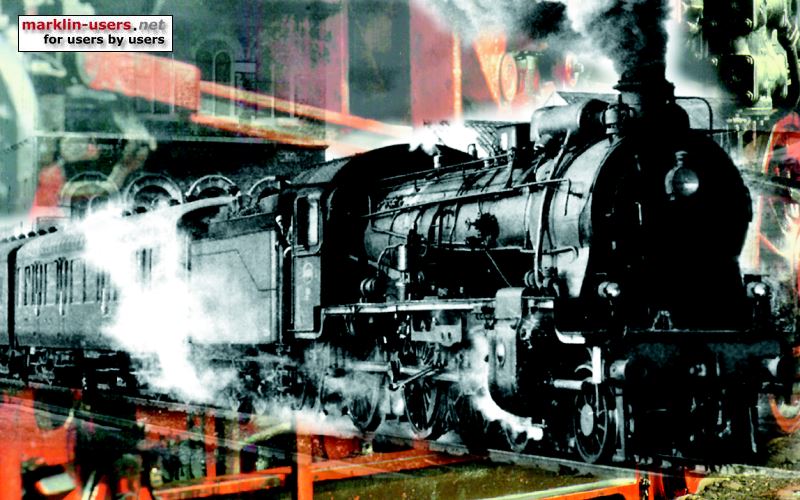
The locomotive inside during the conversion:
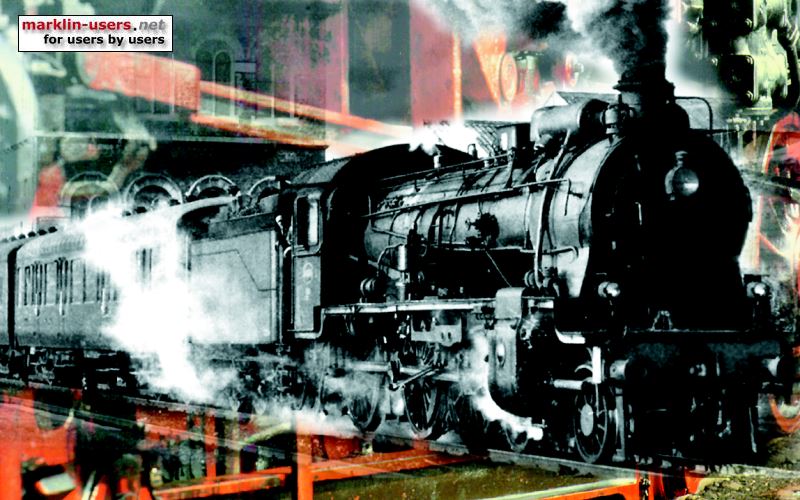
This is before the final interior light installation.
Disassembling
Very simple to explain: remove everything. After removing the pick-up
shoe, unsolder the small contact plate. Then bend out the small lugs on
the lamp contacts and remove the contact from their holders. Unscrew the
two screws on the motor cover and the screw holding the reversing unit. I
also unscrewed the change-over switch for the pantographs (I power all my
locomotives from the pick-up shoe). Then it should be possible
to "lift out" the switch, the reversing unit and the motor in "one piece".
I carefully pack these parts in a small plastic bag and store them under the inlay in the box for the train set.
I also remove the front and rear leading axels and couplers, and the four ladders, to be sure of no
accidents during the work.
The disassembled parts:
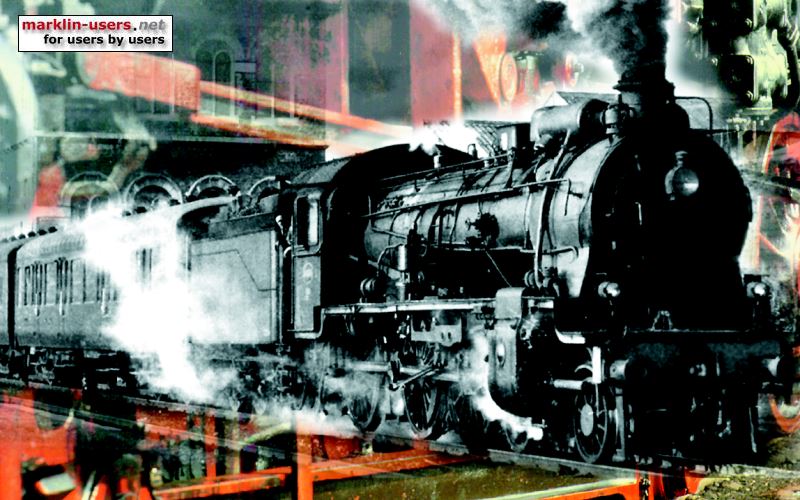
The pick-up shoe with it's screw and contact plate will be re-used.
Cleaning the locomotive's rotating parts
The next step was to remove all wheels, axels and gears, to clean them
thoroughly, as everything seems to be sticky from old oil. I use dish
washing detergent, an old toothbrush and as hot water as I can handle.
After cleaning and brushing, I rinse very well in hot water. I remove the
friction tyres before cleaning the wheels. Some red oil has been used, and
this oil was very sticky and difficult to remove, for instance behind the white
plastic gear. Now it is good.
The new parts, after assembling the cleaned axels and wheels:
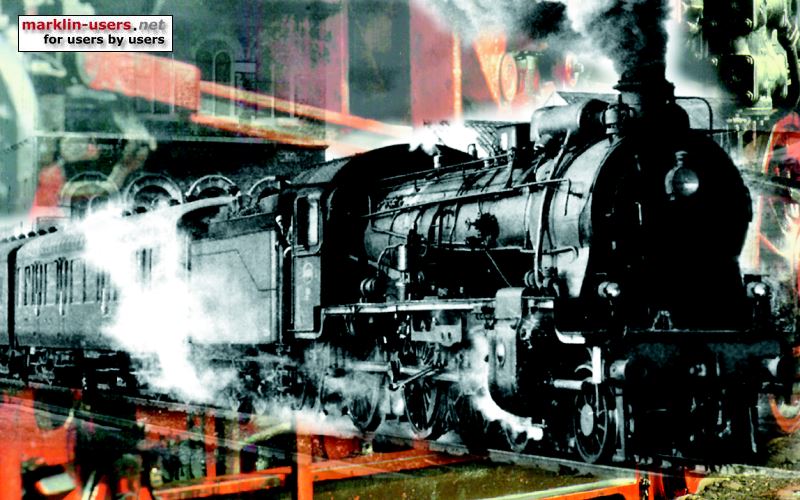
The major parts, from left: mfx decoder (not sound decoder in the photo). Then the motor cover and finally the field
magnet and the rotor.
The small parts, from left: tube insulators, noise suppressors, the bulbs,
ground solder lug, motor cover with screws, the brushes, the pick-up shoe and the
pick-up shoe contact plate.
The 20mm loudspeaker in a square sound chamber is not in the photo.
Installing the motor:
No problem at all. Install the new magnet and enter the rotor. Be
careful to hit the inner bearing (under the sponge). Install the motor
cover and secure it with the two 2x12mm screws. Add a tiny drop of oil on
each rotor end.
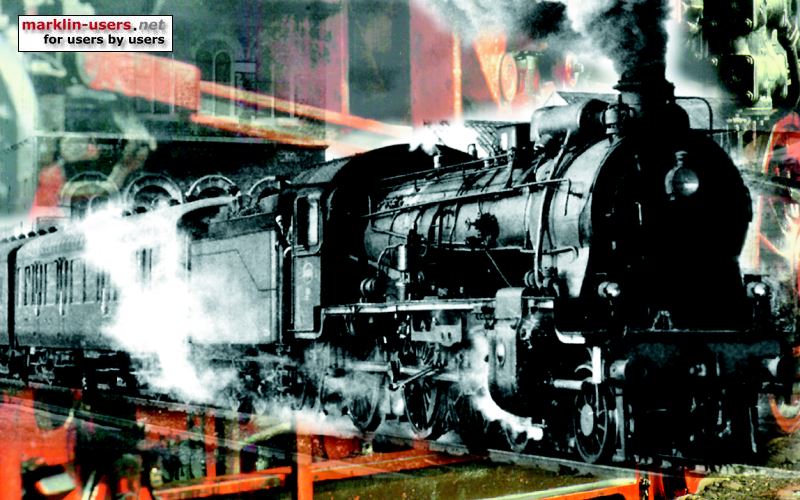
The soldering lug for the ground connection will be installed under the lower
motor screw. The brushes are not installed yet.
On Märklin model 3170, SJ D 109, and other models based on the same locomotive chassis (e.g. Märklin 3030 and 3171), the motor cover is reported to be too thick, interfering with the inside of rear left driving wheel. I have converted my 3171 (from 1988) and this one (from 1989), but have not experienced this problem. The wheel hits the brass axel bearing, as it it supposed to, not the motor cover. If the problem should occur, grind off the cover a little bit (0,6mm) inside the wheel. Maybe this is the case for older models.
Installing the decoder:
I decided to use a ESU V3,0 M4 sound decoder, due to it's programmability and
it's mfx protocol, and that ESU has a sound project for the SJ Da locomotive.
The decoder functions:
See below function table.
Loudspeaker:
For space reasons I have chosen to use a 20mm square speaker, which came from a Märklin mfx
sound decoder set, no. 60933. This speaker has 100 ohm impedance, the same as
the speakers suitable for the ESU V3,0 M4 sound decoders.
Note:
If not using the speaker that comes with a conversion set, check the impedance
of the conversion set's speaker
before connecting the new speaker. The speaker impedance may be
different from one decoder to the next, Some have 100 Ohm, others may have 4 or 8 ohm
speakers. The different impedances are not interchangeable and may damage
the decoder if it's wrong.
The impedance is normally printed on the
speaker. If not, use only the speaker that comes with the decoder.
To be able to install the speaker where I wanted, I had to do some modification
the the locomotive chassis, which I normally try to avoid.
Remaining from the early
Märklin 3030, SJ Da, a holder for a hand shift lever is still on the chassis
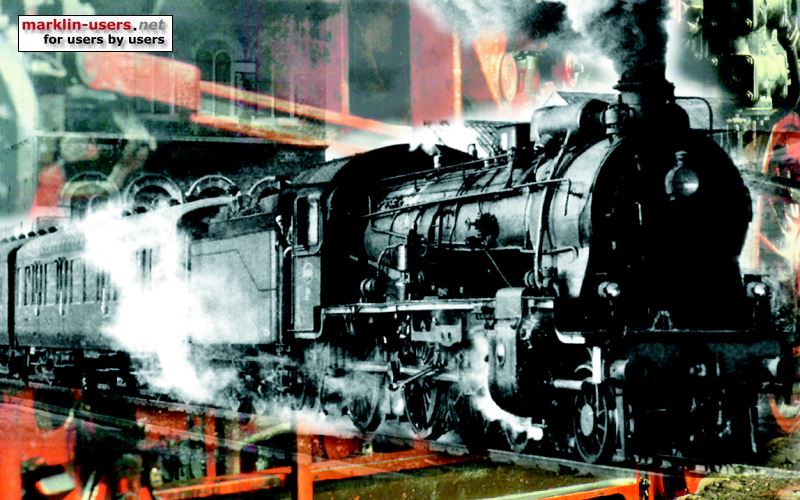
Photo from Märklin 3171, SJ D 109
The holder had to be removed to give space for the speaker.
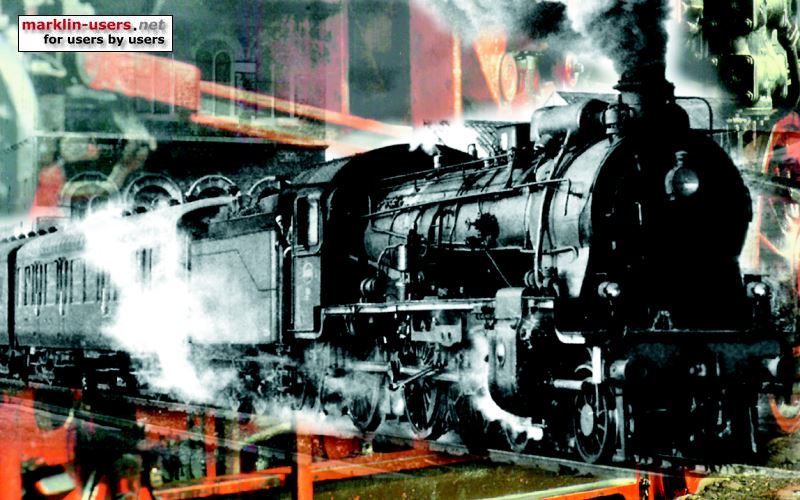
After filing down and cleaning up, the area was painted with a flat black paint.
The speaker is glued into position, with a detachable sticky green stuff from
Faber-Castell, as far backwards as possible. This gives a clear view
through the driver's cabin.
I often use this green stuff, as it gives you the possibility to alter things at
any time, and it secures the "glued" parts very well.
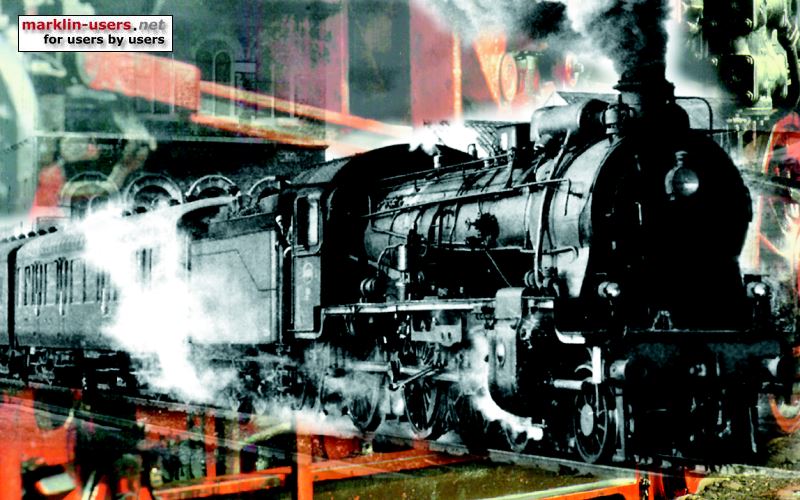
The speaker box is slightly conical, biggest, by 0,5 mm only, in the speaker
end. It interferes with the locomotive body if installed the other way.
There are very little clearance between the speaker and the ceiling.
Front lights, both ends
I use bulb sockets, Märklin spare part no. 624510, pressed into the locomotive chassis. This way the
28V T1 bulbs fits, in both
locomotive ends.
The 610080 bulb in the photo is too long and interferes with the locomotive
body.
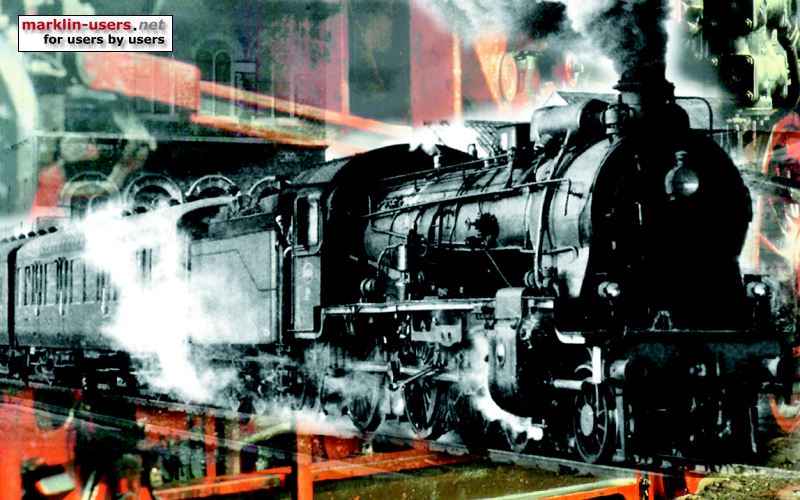
The photo shows a 610080 bulb.
It would be better to use bulb socket 259920, glued behind the "wall", due
to the length of the bulb. See the 3171
conversion, but I had none in my spare part box.
Maybe I will replace the bulb sockets later.
Cabin lights:
I decided to go for three cabin lights. as the locomotive has many big nice
clear windows.
Three T1-bulbs will be glued under the locomotive cieling. A four-pole
connector will connect the locomotive body to the chassis.
This work is going on now, more information will follow soon.
Motor room:
The light in the front cabin is controlled by functions f1+f2, via a
optocoupler,
Everlight EL817.
This means that if both f1 and f2 is on, also the light in the motor room turns
on.
The circuit board for the optocoupler:
The board is made of a small piece of an experimental board. The
optocoupler, a 1,5 Kohm resistor for the coupler LED and a 270 Ohm resistor to reduce the light
intensity is soldered to the board.
If f1 is on, the current flows from "+" through the 1,5Kohm resistor, turns the
LED inside the coupler on, and returns to decoder output f1. The LED opens
the light sensitive transistor in the coupler.
If also f2 is on, the current flows from "+", through the bulb, the 270 Ohm
resistor, the transistor and finally to decoder output f2, which is minus.
The board is 21,5x9,5 mm. The dot on the optocoupler housing is at pin 1.
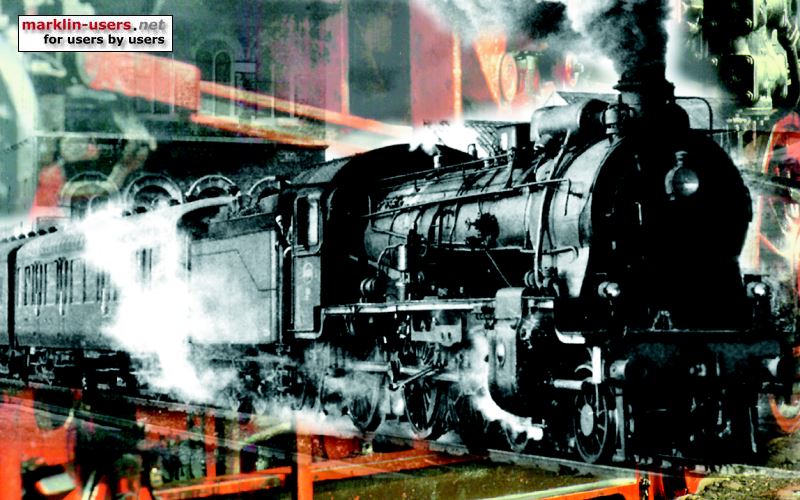
The lowest row is also used to distribute the "+" from the decoder to all the
five light bulbs.
It's a good idea to make photos like this. Then I noticed a poor
soldering, no. two from the left in the top row. It is now improved.
Installed in the locomotive:
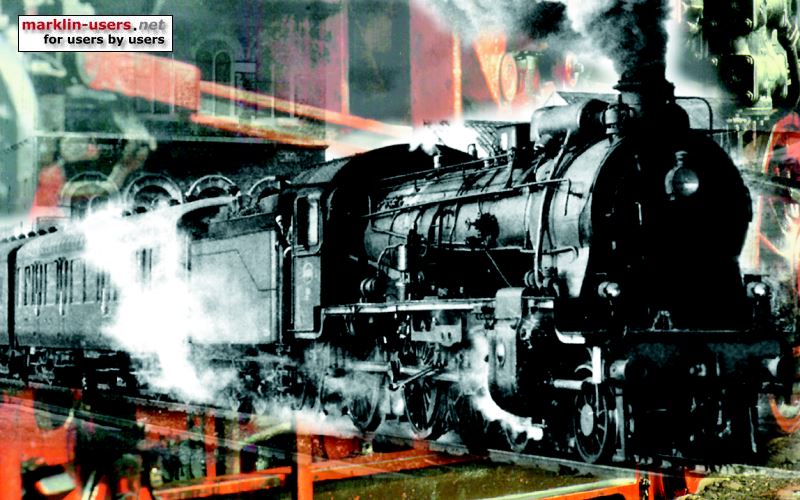
I think I have to cover the circuit board with black tape, as it is very visible
through the centre window.
Part list for the conversion:
| 2870 | Part number | Pcs. | Description |
|---|---|---|---|
| Locomotive | 60923 | 1 | Digital high propulsion conversion set, motor and small parts only |
| 207648 | 1 | Speaker chamber, square | |
| 207649 | 1 | Holder for speaker | |
| ?? | 1 | Speaker, 100 Ohm 0,5 W, 20 mm (from a 60933 conversion set) | |
| 624510 | 2 | Bulb holders | |
| ESU 62400 | 1 | Loksound V3,0 M4 sound decoder, programmed with ESU sound project file 63459, electric locomotive SJ Da | |
| - | 5 | 28 Volt T1 light bulbs | |
| - | 3 | 2-pole bulb holder, cut from a SIL connector | |
| - | 1 | Everlight EL 817 optocoupler | |
| - | 1 | 1,5 Kohm resistor for optocoupler | |
| - | 1 | 270 Ohm resistor for motor room light | |
| - | 1 | Home made experimental circuit board, 3 rows, 8 holes | |
| Cars, incl. 4271 |
7319 | 3 | Current conducting couplers |
| 60960 | 1 | Function decoder for the interior light in all the coaches | |
| - | 1 | 1-pole miniature relay, light power supply to the 2870 coaches | |
| 610080 | 8 | Light bulbs, to reduce the light intensity in the coaches |
My setting of the decoder:
| Decoder settings, 2870 | Default | Mine | |
|---|---|---|---|
| Analog settings: | |||
| Enable analog mode | check | < | |
| Starting voltage | 15,500 | < | |
| Maximum voltage | 25,500 | < | |
| Control settings: | |||
| Swap directions | uncheck | < | |
| Max. speed | 255 | 88 | |
| Min. speed | 3,000 | 1 | |
| Acc. time | 7,000 | 10,000 | |
| Dec. time | 5,250 | 10,000 | |
| Forward trim | 1,000 | < | |
| Reverse trim | 1,000 | < | |
| Motor settings: | |||
| Motor PWM-frequency: | |||
| Low frequency | uncheck | < | |
| High frequency | check | < | |
| Load Control: | |||
| Reference parameter | 12,500 | < | |
| Control parameter K | 32 | < | |
| Control parameter I | 24 | < | |
| Control influence | 255 | < | |
| Special options: | |||
| Preserve direction | check | < | |
| Persistent acceleration | uncheck | < | |
| Persistent speed | check | < | |
| Persistent functions | check | < | |
| Sound settings: | |||
| Volume | 255 | 60 | |
| Driving Sound Rate: | |||
| At min. speed | 1,000 | < | |
| At max. speed | 1,480 | < | |
| Random Sound: | |||
| Min. gap | 0 | 10 | |
| Max. gap | 0 | 40 | |
| Braking Sound Threshold: | 14 | < | |
The 2870 function table, including the connected Märklin 4271 and the 2870 coaches:
| 2870 SJ D 101 | 4271 SJ DF 01 | 2870 SJ D 101 | |||||||||||||||||||
|---|---|---|---|---|---|---|---|---|---|---|---|---|---|---|---|---|---|---|---|---|---|
| mfx sound | Light | Light in coaches |
Light in 4271 | Light in locomotive | Flute |
Driving sounds |
Shunt speed |
Acc/ dec |
Brake sound |
sound | sound | sound | sound | sound | |||||||
| function | direction | front | rear | cargo | post | full | front | rear | motor | short | long | ||||||||||
| f0 | forward | 3 | |||||||||||||||||||
| reverse | 3 | ||||||||||||||||||||
| f1 | 6 0 9 6 0 |
relay on | |||||||||||||||||||
| f2 | on | ||||||||||||||||||||
| f3 | on | ||||||||||||||||||||
| f4 | on | ||||||||||||||||||||
| f5 | both | on | on, if both f5 & f6 on |
||||||||||||||||||
| f6 | both | on | |||||||||||||||||||
| f7m | both | on | |||||||||||||||||||
| f8m | both | on | |||||||||||||||||||
| f9 | both | on | f10 = shunting mode | ||||||||||||||||||
| f10 | both | on | delay off | off | |||||||||||||||||
| f11m | both | on | |||||||||||||||||||
| f12m | both | on | |||||||||||||||||||
| f13m | both | on | |||||||||||||||||||
| f14m | both | on | |||||||||||||||||||
| f15m | both | on | |||||||||||||||||||
| Start | f. | ||||||||||||||||||||
| r. | |||||||||||||||||||||
| Stop | f. | ||||||||||||||||||||
| r. | |||||||||||||||||||||
A screenshot from Märklin Central Station 1:
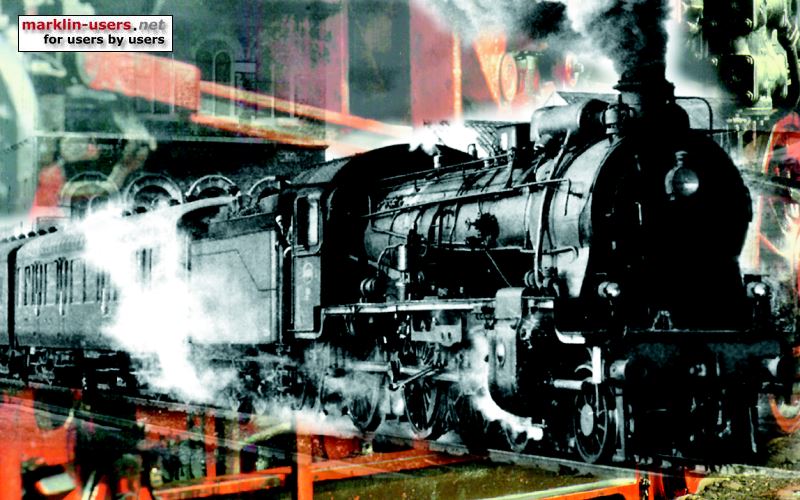
The dark area between f0 and f5 is reserved for a consist with the function decoder Märklin
60960 in 4271.
The wiring diagram, including the cars, with Märklin wire colours::
The wiring diagram for the locomotive, with ESU wire colours:
